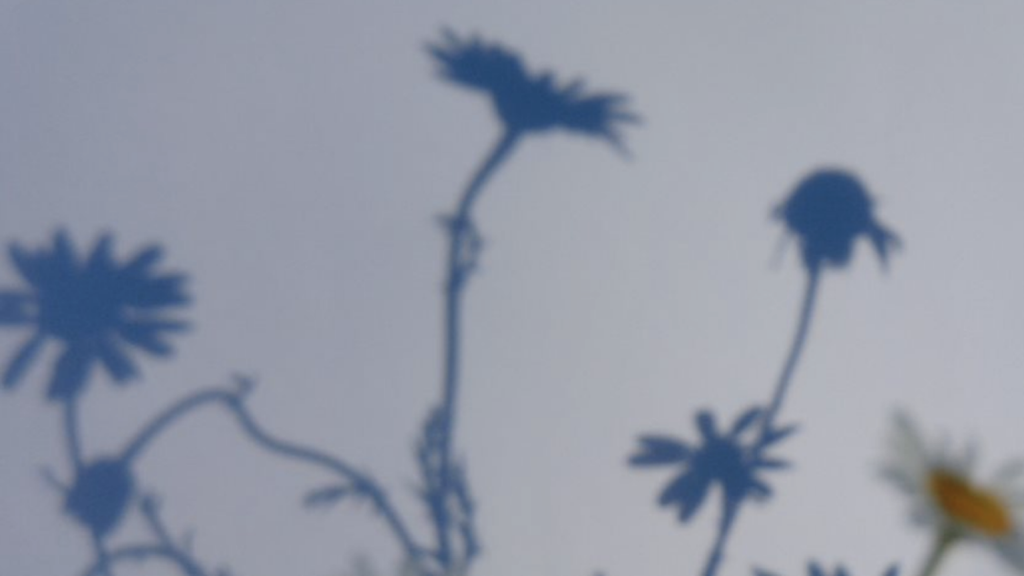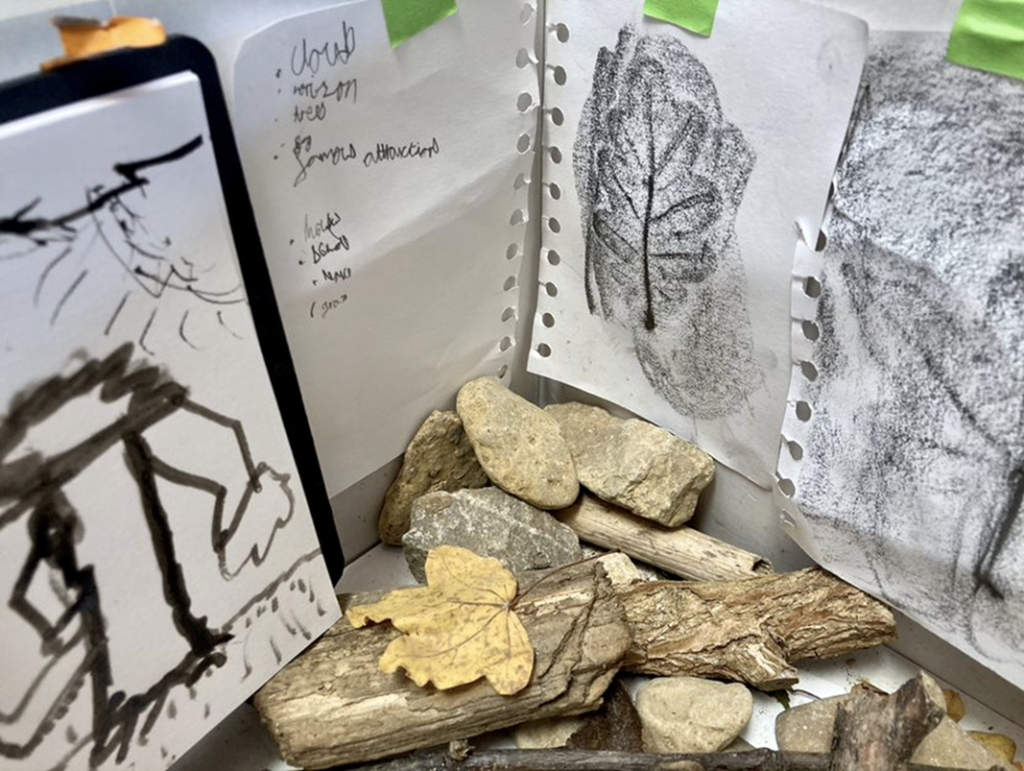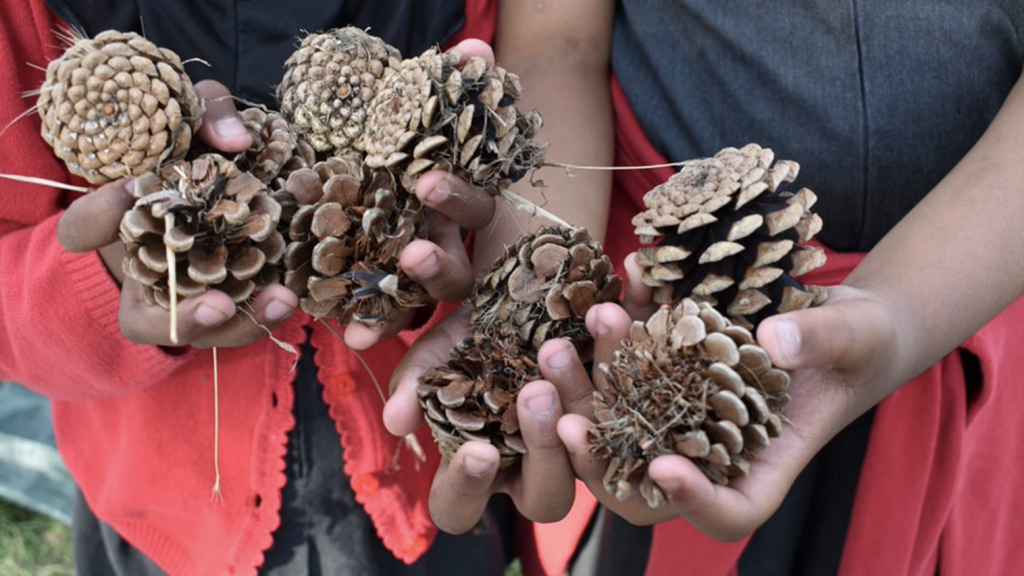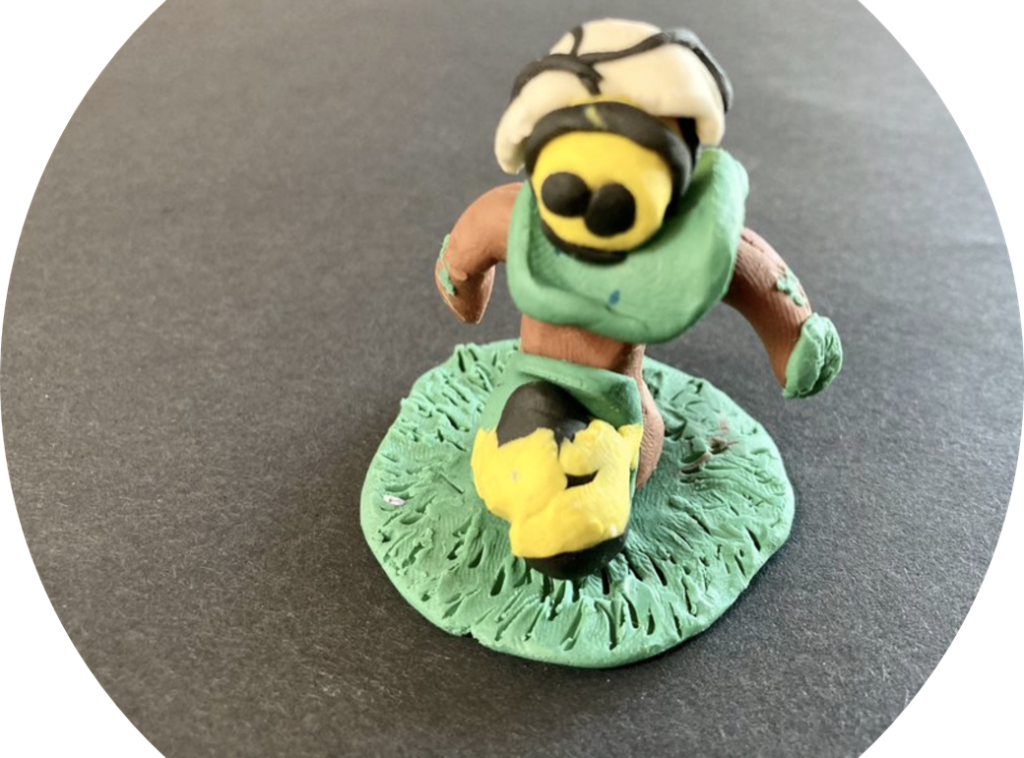What does nature mean to me?
How can children from diverse backgrounds communicate their connection with nature and biodiversity through art? In what ways are nature-based spaces important for children’s wellbeing? What are the diverse experiences of nature that children across the city experience?

Children’s connection with nature is considered important for improving wellbeing and encouraging pro-environmental behaviours at a time of planetary crisis. However, the impact of directives to ‘stay at home’ during the COVID-19 pandemic have raised concerns over children’s health, development, and engagement with the outdoors, particularly in areas of low socio-economic status.
In the UK, research suggests lockdown periods for some children meant more time and interest in nature and enhanced wellbeing; whilst for others, more likely those from less affluent families, connection with nature decreased. Natural England’s (2020) survey of children between 8-15 years old in August 2020 found that 48% of children said worry about catching COVID prevented them from going outdoors. Additionally, differences were found between children from different ethnic and economic backgrounds, with 71% of children from ethnic minority backgrounds reporting spending less time outside since coronavirus, compared with 57% of white children and 73% of children from households earning below £17,000 spending less time outdoors compared to 57% of children from households earning above this threshold. Howlett and Turner’s (2021) findings that parents in Cambridgeshire and North London reported COVID-19 restrictions had changed the amount of time their children spent outside, with children from urban areas spending more time indoors, are also significant in confirming pre-pandemic differences between urban and rural children’s access to green spaces. Together, these studies suggest that the COVID-19 restrictions have exacerbated pre-existing inequalities in opportunities for children from ethnic minorities, urban areas and low socio-economic households to engage with nature and complicated understandings about whether outdoor spaces are safe spaces for avoiding (physical and mental) ill-health.
What did the project involve?
This study originated from similar concerns within communities across Bristol about children’s engagement with outdoor spaces in their local area; the impact of the pandemic on their mental wellbeing and physical development; and the acknowledgement that risk to children’s safety often prevented opportunities for child-nature connection. The researchers sought to investigate the following questions:
- How can children from diverse backgrounds communicate their connection with nature and biodiversity through art?
- In what ways are nature-based spaces important for children’s wellbeing?
- What are the diverse experiences of nature that children across the city experience?
- In what ways can children’s collective actions around nature-based play amplify the importance of this for children in the city?
- What are the relationships between children’s connections with local ecologies and curiosities about biodiversity and long-term environmental activism?
The team designed a series of child-led, arts-based workshops to engage two groups of culturally diverse children from different areas of the city in creative activities within local natural spaces. Over the course of 5 weeks during the autumn of 2022, artists, supervising adults, children, researchers, and artistic/research materials such as cameras, dictaphones, ink, pencils, paper, and plasticine came together in four different spaces across the city.
The project worked with 10 children aged 9-11 years from Room13 (an independent art studio in the playground of Hareclive primary school), and Barton Hill Activity club to co-design a series of nature based visits facilitated through arts processes. These groups were based in very different geographical regions of Bristol, and both are in areas of high socio-economic disadvantage. The researchers co-designed with the artists and other representatives of each organisation to consider where they might visit and the artistic approaches they might take to exploring the research questions.
Each group was taken to three different green spaces in Bristol for a 2 hour arts-based session. These spaces were: Dundry Hill, Ashton Court and Netham Park. The groups went individually with the artists and researchers and explored the spaces through drawing, painting, making, collecting natural materials for collages and photography. The researcher’s cameras and digirecorders were used by the children in this art making / documentation of their experiences and the adults wrote up reflections after each session. In particular, the project focused on the child-nature-art assemblages that emerged and the ways in which both art and nature enabled conversations about wellbeing, mental health, children’s physicality, ability to engage in risk and their connections to/as nature both out in the green spaces and in their homes as the researchers explored their relationships to pets.
Who are the team and what do they bring?
- Debbie Watson (Policy Studies, University of Bristol) is a Professor in Child and Family Welfare and the Head of the Centre for Children and Families Research in the School for Policy Studies whose research focuses on understanding and improving the lives of children and young people, particularly those in adverse circumstances such as poverty and maltreatment. She utilises creative and sociomaterial approaches to research.
- Lois Peach (Policy Studies, University of Bristol) is a PhD candidate in the School for Policy Studies researching intergenerational programmes. Her research is interested in exploring different ways to understand intergenerational relationships between children and older adults. She is particularly interested in considering intergenerational interaction from a multi-generational and posthuman perspective.
- Shani Ali and Paul Bradley (Room13) Shani and Paul are visual artists, educators and directors of Room 13, Hareclive. Shani and Paul help facilitate the work of younger artists. Children go to the studio to draw, paint, collage, sculpt, take photographs, make films, research, read and work on the computer. In Room 13, children are free to follow their own ideas and work on their own creative projects. Their studio is based in the grounds of Hareclive Academy (primary school) in Hartcliffe south Bristol in the UK.
What were the results?
Following the six sessions the children were brought together in a sharing celebration event at the De-bordering plots at the University of Bristol where they screened their photos and short films and they presented their art works and reflected together on what nature meant to them.
The researchers are currently writing a paper for the journal Children’s Geographies called: ‘‘Risky’ child-nature relations across the city: Posthuman perspectives on children’s arts-based exploration of urban natural spaces’.
This project has also fed into a larger project for Room13 with Arts Council funding where they are focusing more on art in nature.
Below are a series of photographs produced during the workshops:







